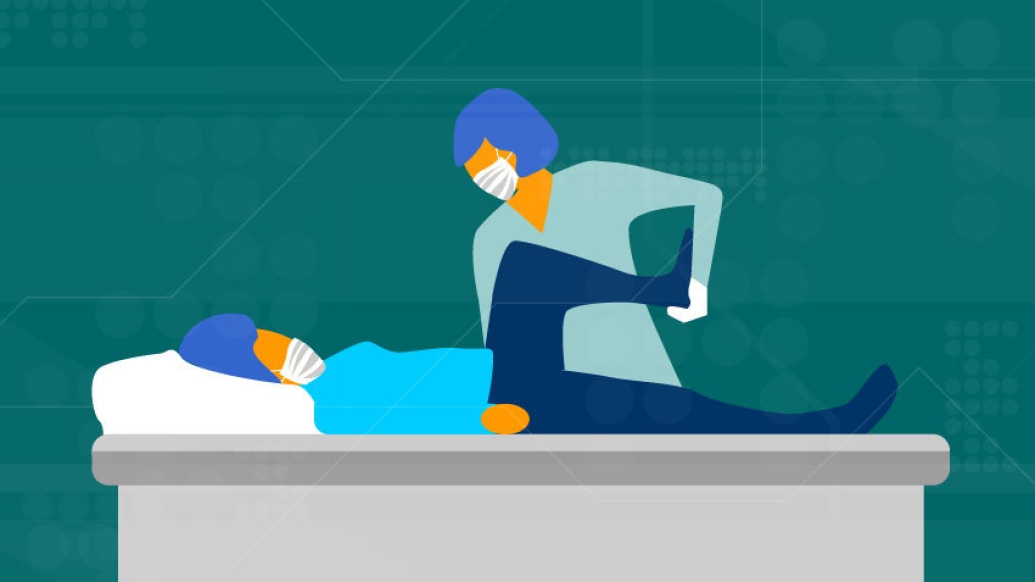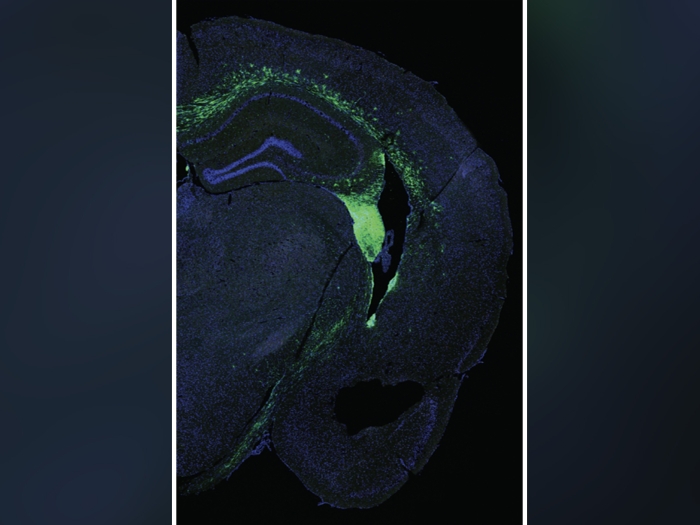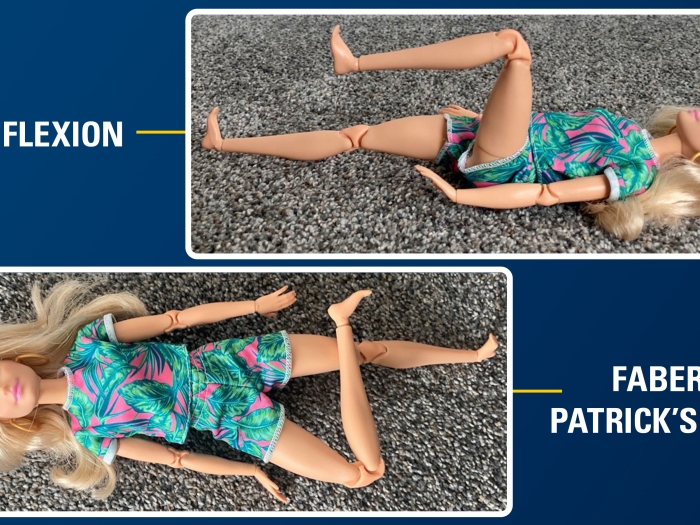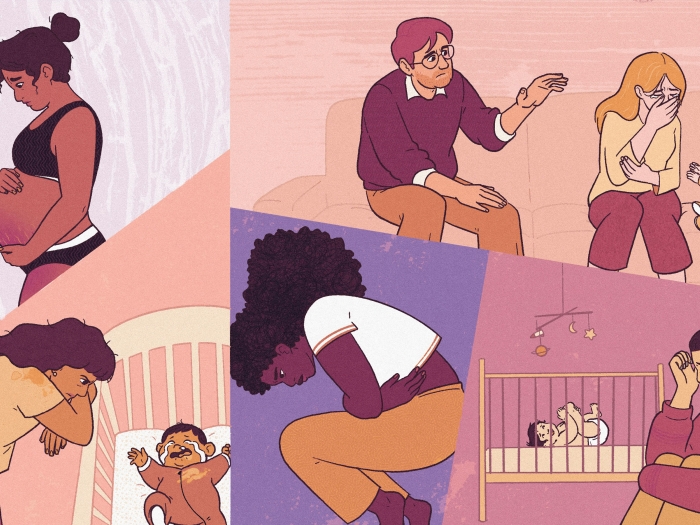Providers find patients hospitalized from COVID-19 need physical and cognitive rehabilitation care to aid in their recovery from the virus’ damaging effects on the body and mind.
12:14 PM
Author |

For patients that experience severe cases of the COVID-19 virus, no longer needing mechanical ventilation and leaving the intensive care unit are great successes. But, for some patients, recovering from the virus is just beginning.
"Patients recovering from COVID-19 have a variety of other negative side effects from the virus, including some that are very complicated," says Sean Smith, M.D., an assistant professor of physical medicine and rehabilitation at Michigan Medicine.
Smith has been helping patients with COVID-19 physically recover from the virus, while his colleague, Katharine Seagly, Ph.D., a clinical neuropsychologist and assistant professor of physical medicine and rehabilitation at Michigan Medicine, has been assisting patients with their cognitive recovery from it.
"Rehabilitation care is vitally important for patients who experience any type of debilitating illness," Seagly says. "And it's important that patients receive the physical aspects of rehabilitation care, as well as cognitive rehabilitation care, to ensure their health and wellbeing is being addressed comprehensively."
They explain more about the rehabilitation needs of patients with COVID-19, along with what rehabilitation providers have learned thus far while treating this patient population.
For patients recovering from COVID-19, particularly those with severe cases, what type of rehabilitation care are they most commonly needing?
Smith: Physically, all patients hospitalized with COVID-19 have some degree of debility. Meaning, they aren't as strong as they were before the virus. This may be from simply being in bed more often than usual. But patients who receive ICU-level care may develop ICU-related weakness, which can directly damage the nerves and muscles in the body. These patients may have weakness in their lower legs and/or hands and fingers, which makes walking difficult, as well as activities of daily living, like getting dressed and showering.
SEE ALSO: Keeping Our Patients Safe During COVID-19
Seagly: Cognitively, we are seeing a good number of patients presenting with delirium, a period of acute confusion when patients are unable to pay attention consistently and often have trouble forming memories. Delirium is sometimes seen with patients who require ventilation and/or sedation due to other diagnoses, but, anecdotally, the delirium has appeared worse for many patients with COVID-19.
Patients' cognitive status ranges from intact to severely impaired, with severe impact seeming to coincide with older age, longer time on a ventilator and other neurological complications, such as stroke, though research is needed to confirm these findings. Most commonly, patients appear to have slowed cognitive processing speed, decreased attention and decreased ability to visually analyze images, whereas verbal abilities seem more intact. But all of this needs to be confirmed with research efforts. It's also important to remember that some patients do not appear to have any cognitive side effects after being hospitalized with the virus.
Why is rehabilitation care important for patients affected by COVID-19?
Smith: Without rehabilitation, many post-COVID-19 patients will continue to have weakness and/or cognitive impairment for a long time, and perhaps permanently. We know from other diseases that cause ICU-level hospitalizations and neurologic disorders that the more — and earlier — rehabilitation occurs, the better the outcome.
Seagly: From a neuropsychological perspective, rehabilitation is important for a number of reasons. While the physical debility and generalized weakness are obvious treatment targets in rehabilitation, cognitive changes are often less obvious initially, but can pose a great risk to patient safety. For instance, if a patient recovers physically and is capable of doing things like walking and driving, but has slowed cognitive processing, it could lead to poor safety judgement while operating a vehicle and could pose great risks for the patient, and potentially others.
Cognitive rehabilitation helps to optimize thinking abilities prior to discharge, can aid in teaching the patient strategies for optimizing cognitive functioning at home and, importantly, is a time to help train family and caregivers on the patient's needs. It's a time to educate the patient and family on safety precautions and build an understanding of what the patient is capable of and is still working on accomplishing. Inpatient rehabilitation also allows time for the family to make their home safe for the patient, and to get a plan in place if the patient requires physical assistance or supervision due to cognitive issues. This allows more patients to discharge to their home with loved ones, rather than to a subacute setting or nursing home.
Because COVID-19 is a new virus, has the rehabilitation team found it needs to implement new techniques or protocols to successfully help this patient population?
Smith: Michigan Medicine has considerably increased acute care rehabilitation capacity. This means patients are receiving more physical and occupational therapy than usual, and physicians specializing in physical medicine and rehabilitation are seeing a large number of patients, which helps make the transition to outpatient rehabilitation care seamless. Despite these efforts, capacity for inpatient rehabilitation must increase, as there are more patients now who are unable to physically or cognitively discharge home due to the impairments from COVID-19.
SEE ALSO: Seeking Medical Care During COVID-19
Seagly: If there is a silver lining here, it has been the revolutionizing of virtual patient care. When the COVID-19 infection rates were still very high at Michigan Medicine, I and my neuropsychology and rehabilitation psychology colleagues were exclusively seeing patients, both outpatients and inpatients, via video. While this does have limitations regarding the cognitive assessments we are able to administer, it has huge benefits in terms of infection control. We are now using a hybrid model where we see most patients virtually, though we often see inpatients in person after they have had two negative COVID-19 tests, at least 24 hours apart.
Are there any differences in the type of rehabilitation care needed between inpatient and outpatient populations?
Smith: Inpatients being treated for COVID-19 should be mobilized as soon as it's safe, meaning skilled-care providers should help them move and walk. Bed rest is one of the worst things that can happen to the body's musculoskeletal and nervous systems.
Outpatients with physical or cognitive issues need to be seeing a physical medicine and rehabilitation physician, or at the very least, their primary care physician. From there, they may need physical, occupational or speech therapy. Many will also need psychologic care to help them cope with their life after COVID-19.
Seagly: I'm actively seeing inpatients who are recovering from the virus. My recommendations have been primarily related to psychological adjustment, as prolonged hospitalization and severe illness can cause or contribute to increased anxiety, depression and sometimes even a post-traumatic type response.
I've been working with a number of patients on strategies for decreasing excessive worrying that has arisen in relation to the pandemic and their own illness, and also on pacing strategies to ensure they are able to participate in meaningful, enjoyable activities despite debility-related fatigue. Cognitively, many patients are benefitting from the use of memory notebooks. Also, patients do better with adequate caregiver support, so determining who will provide support, and when and how they will do so, is very important and can take quite a bit of planning with the rehabilitation team.
How has the COVID-19 pandemic changed or adapted the way you deliver rehabilitation care, and do you think any of these adjustments will remain after the pandemic slows or ends?
Smith: In addition to increasing capacity for inpatient physical and occupational therapy, outpatient care has been utilizing video visits to meet with patients virtually. Although there are some limitations, this medium is here to stay and will be great for patients who may not need to be seen in person for a follow-up visit.
Seagly: Agreed. Virtual care is definitely the biggest change in how rehabilitation care is delivered in the COVID-19 era. Now that we know how effective this delivery method can be, it will definitely be here to stay, assuming insurance companies continue to cover virtual services. It's not a replacement for in-person services, but a hybrid model, in which some services can be done virtually and some in person. For instance, with outpatient neuropsychological evaluations, we used to spend six to eight hours face-to-face with a patient doing a clinical interview, testing, handling test stimuli, etc. Now we are doing much of the assessment virtually, with the patient and provider in their respective homes, and then following up with virtual testing in the clinic if more comprehensive testing is needed. The patient is in one clinic room observing testing materials on a screen, while the person administering the tests is in an adjacent room. There are a few tests that need to be administered face to face, but we are minimizing the use of these. We are still working out the kinks, but this allows for a similar assessment, while minimizing the risk of virus transfer.
What strategies have you learned while providing rehabilitation care to patients with COVID-19 that other physicians should consider implementing in their own care models?
Smith: I think educating other providers about the neurological, cognitive and musculoskeletal deficits that COVID-19 patients face is important. Everyone who treats these patients wants them to thrive, but they may not know the extent to which rehabilitation can help. Getting the word out is the primary step; from there, providers are typically eager to engage rehabilitation teams.
Seagly: I think everyone is still working out best practices in rehabilitation for patients with COVID-19. I believe screening for cognitive changes in anyone hospitalized with the virus is warranted, and of course providing cognitive rehabilitation, along with physical and occupational therapy, is important when needed.
MORE FROM THE LAB: Subscribe to our weekly newsletter
Patients should also be screened for anxiety and depression given we already know that prolonged ICU stays can result in adjustment difficulties. Mood changes should be a primary treatment target, as anxiety and depression can derail the rehabilitation process and decrease overall quality of life when recovering from any illness. And lastly, I think we should continue to think outside the box in the name of delivering patient-centered care.
Providing care during a pandemic has forced us to adapt our practice and think creatively to meet patient needs. My hope is that rehabilitation services, and all patient care services, will continue to evolve and improve now that we've realized changes and improvements can be made in a relatively short period of time when we have no other option.
Like Podcasts? Add the Michigan Medicine News Break to your Alexa-enabled device or subscribe for updates on iTunes, Google Play and Stitcher.

Explore a variety of healthcare news & stories by visiting the Health Lab home page for more articles.

Department of Communication at Michigan Medicine
Want top health & research news weekly? Sign up for Health Lab’s newsletters today!





